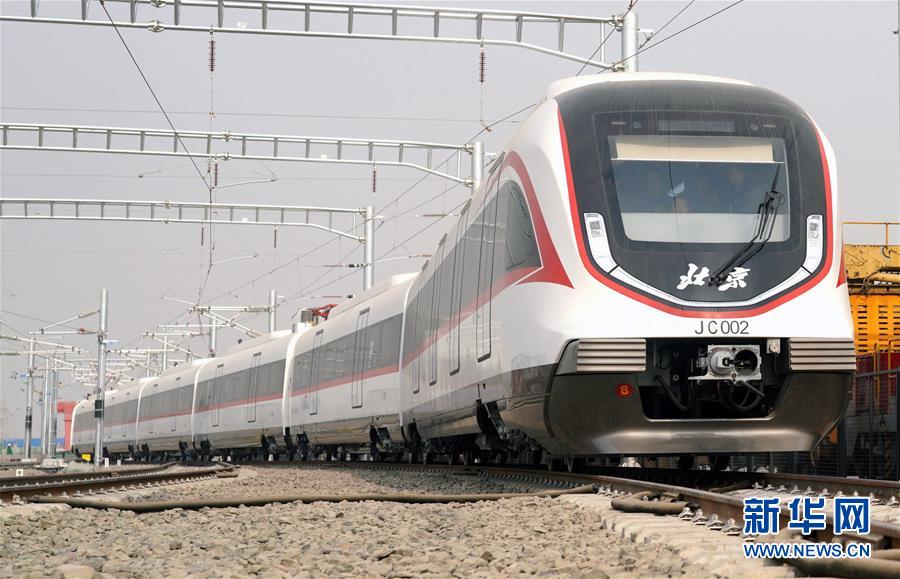
1. System setting module: a complete set of warehouse management system can realize the customization of warehouse management work, including administrator permissions, entry and exit Strategy, approval, etc. In addition, the functions of permission control, information sharing, query and other functions of materials are also the focus of this function.
2. Warehouse management module (1) Product warehousing: procurement warehousing or other warehousing, automatically generated warehousingWarehouse order number, goods and can be selected conveniently and quickly, and can distinguish between normal warehousing, return warehousing and other different warehousing methods.
3. The e-commerce warehousing management system usually includes the following functional modules: warehousing management: including commodity warehousing registration, warehousing order management, inventory updating and other functions, which are used to manage the warehousing process and inventory of commodities.

1. The basic functional modules of ERP include procurement, finance and accounting, human resources management, manufacturing, order management, supply chain management, ERP distribution module, CRM, e-commerce, inventory management and warehouse management. Each module aims to meet specific business needs. The ERP module ensures that data is concentrated on one platform to help employees complete tasks easily.
2. The ERP system mainly includes the following functional modules: supply chain management modules: including procurement, inventory management, inventory control, logistics management, etc.
3. The functional modules of the erp system can be divided into 8 categories: financial management function module, accounting function module, production control management function module, procurement managementFunctional module, inventory control functional module, distribution management functional module, logistics management functional module, human resources management functional module.
4. ERP (Enterprise Resource Planning) system is an integrated management information system used to realize the coordination and integration of various resources within the enterprise, in production, procurement, sales, finance and other aspects. Provide overall management and decision-making support.
5. ERP system is the abbreviation of enterprise resource planning system. It is an internal management tool that can improve the utilization efficiency and management accuracy of enterprise resources. The ERP system usually includes the following main functional modules: logistics management module: including logistics management in procurement, inventory, sales, etc.
1. The common social logistics systems are as follows: WMS, that is, Warehouse Management System: this kind of system mainly It is used for cargo management in the warehouse, including the in-warehouse, out-of-warehouse, transfer, inventory and other operations of goods.
2. Commonly used logistics management information systems include warehousing management information system, logistics and transportation management information system, order management information system, electronic order system, and sales point information system.
3. The classification of logistics systems includes supply logistics, production logistics, sales logistics, recycling logistics and waste logistics. Supply logistics: When raw materials, parts or other items are provided to the production enterprise, the physical flow of goods between the provider and the demand.
4. Logistics information subsystem: the information subsystem of logistics is mainly the functional modules and software and hardware facilities of various logistics information processing, logistics information collection, logistics information feedback in the logistics system.
Modern logistics needs to rely on information technology to ensure the normal operation of the logistics system. The information service function of the logistics system includes planning, forecasting, dynamic (shipment, receipt, delivery, storage) intelligence and related cost intelligence, production intelligence and market intelligence activities related to the above functions.
Seven functions of logistics: transportationFunction, warehousing function, packaging function, loading and unloading function, distribution function, circulation processing function, information processing function. Transportation function. Transportation function is the most basic and core function in the logistics industry. Transport the customer's goods from the local area to the designated place. Storage function.
Seven functions of logistics: 1) Transportation function Transportation function is one of the basic service contents of logistics services. The main purpose of logistics is to meet the customer's requirements for certain goods under the conditions of time and place. The transformation of time and the transfer of location are the basic factors to realize the value of logistics.
Seven components: transportation, warehousing, packaging, handling and unloading, circulation processing, distribution and related logistics information of objects.
The functional elements of the logistics system are generally considered to be transportation, storage, packaging, loading and unloading, circulation processing, distribution, logistics information, etc.If we examine the actual work links of logistics activities, logistics consists of the above seven specific tasks.
The strengthening of logistics information management system management control, decision-making analysis and strategic planning needs to be based on a strong trading system.
1. The functional modules of WMS include: initialization. Before the WMS system is enabled, you can make custom settings for the operating rules of the system, such as logical verification of warehouse entry and exit, source settings of warehouse entry and exit, closing rules, etc. For the inventory materials in the warehouse, the inventory list can be directly imported into the system as initial data before the new system is activated.
2. The warehouse management module in the ERP system, also known as the warehouse management system (WMS), is a warehouse management software mainly used to manage goods in the warehouse. ERP system is an integrated enterprise resource planning system, which covers all aspects of enterprise operation, including finance, human resources, procurement, sales, inventory management, etc.
3. Warehouse management module (1) Product warehousing: purchase warehousing or other warehousing, automatically generate warehousing order numbers, goods and can be selected conveniently and quickly, and can distinguish between normal warehousing, return warehousing and other different warehousing methods.
4. WMS stands for Warehouse Management System. The warehousing management system uses the Internet of Things, big data and other technologies to realize intelligent warehouse management, systematic warehousing management, transparent material preparation management, and refined operation process in the warehouse for enterprises with multiple goods and warehouses.
5. The functional modules of the warehouse management system include: warehouse management (return management), warehouse management, warehouse management, inventory and replenishment management, commodity file management, warehouse process configuration, billboard management, data statistical reports, etc.
Global trade customs valuation analysis-APP, download it now, new users will receive a novice gift pack.
1. System setting module: a complete set of warehouse management system can realize the customization of warehouse management work, including administrator permissions, entry and exit Strategy, approval, etc. In addition, the functions of permission control, information sharing, query and other functions of materials are also the focus of this function.
2. Warehouse management module (1) Product warehousing: procurement warehousing or other warehousing, automatically generated warehousingWarehouse order number, goods and can be selected conveniently and quickly, and can distinguish between normal warehousing, return warehousing and other different warehousing methods.
3. The e-commerce warehousing management system usually includes the following functional modules: warehousing management: including commodity warehousing registration, warehousing order management, inventory updating and other functions, which are used to manage the warehousing process and inventory of commodities.

1. The basic functional modules of ERP include procurement, finance and accounting, human resources management, manufacturing, order management, supply chain management, ERP distribution module, CRM, e-commerce, inventory management and warehouse management. Each module aims to meet specific business needs. The ERP module ensures that data is concentrated on one platform to help employees complete tasks easily.
2. The ERP system mainly includes the following functional modules: supply chain management modules: including procurement, inventory management, inventory control, logistics management, etc.
3. The functional modules of the erp system can be divided into 8 categories: financial management function module, accounting function module, production control management function module, procurement managementFunctional module, inventory control functional module, distribution management functional module, logistics management functional module, human resources management functional module.
4. ERP (Enterprise Resource Planning) system is an integrated management information system used to realize the coordination and integration of various resources within the enterprise, in production, procurement, sales, finance and other aspects. Provide overall management and decision-making support.
5. ERP system is the abbreviation of enterprise resource planning system. It is an internal management tool that can improve the utilization efficiency and management accuracy of enterprise resources. The ERP system usually includes the following main functional modules: logistics management module: including logistics management in procurement, inventory, sales, etc.
1. The common social logistics systems are as follows: WMS, that is, Warehouse Management System: this kind of system mainly It is used for cargo management in the warehouse, including the in-warehouse, out-of-warehouse, transfer, inventory and other operations of goods.
2. Commonly used logistics management information systems include warehousing management information system, logistics and transportation management information system, order management information system, electronic order system, and sales point information system.
3. The classification of logistics systems includes supply logistics, production logistics, sales logistics, recycling logistics and waste logistics. Supply logistics: When raw materials, parts or other items are provided to the production enterprise, the physical flow of goods between the provider and the demand.
4. Logistics information subsystem: the information subsystem of logistics is mainly the functional modules and software and hardware facilities of various logistics information processing, logistics information collection, logistics information feedback in the logistics system.
Modern logistics needs to rely on information technology to ensure the normal operation of the logistics system. The information service function of the logistics system includes planning, forecasting, dynamic (shipment, receipt, delivery, storage) intelligence and related cost intelligence, production intelligence and market intelligence activities related to the above functions.
Seven functions of logistics: transportationFunction, warehousing function, packaging function, loading and unloading function, distribution function, circulation processing function, information processing function. Transportation function. Transportation function is the most basic and core function in the logistics industry. Transport the customer's goods from the local area to the designated place. Storage function.
Seven functions of logistics: 1) Transportation function Transportation function is one of the basic service contents of logistics services. The main purpose of logistics is to meet the customer's requirements for certain goods under the conditions of time and place. The transformation of time and the transfer of location are the basic factors to realize the value of logistics.
Seven components: transportation, warehousing, packaging, handling and unloading, circulation processing, distribution and related logistics information of objects.
The functional elements of the logistics system are generally considered to be transportation, storage, packaging, loading and unloading, circulation processing, distribution, logistics information, etc.If we examine the actual work links of logistics activities, logistics consists of the above seven specific tasks.
The strengthening of logistics information management system management control, decision-making analysis and strategic planning needs to be based on a strong trading system.
1. The functional modules of WMS include: initialization. Before the WMS system is enabled, you can make custom settings for the operating rules of the system, such as logical verification of warehouse entry and exit, source settings of warehouse entry and exit, closing rules, etc. For the inventory materials in the warehouse, the inventory list can be directly imported into the system as initial data before the new system is activated.
2. The warehouse management module in the ERP system, also known as the warehouse management system (WMS), is a warehouse management software mainly used to manage goods in the warehouse. ERP system is an integrated enterprise resource planning system, which covers all aspects of enterprise operation, including finance, human resources, procurement, sales, inventory management, etc.
3. Warehouse management module (1) Product warehousing: purchase warehousing or other warehousing, automatically generate warehousing order numbers, goods and can be selected conveniently and quickly, and can distinguish between normal warehousing, return warehousing and other different warehousing methods.
4. WMS stands for Warehouse Management System. The warehousing management system uses the Internet of Things, big data and other technologies to realize intelligent warehouse management, systematic warehousing management, transparent material preparation management, and refined operation process in the warehouse for enterprises with multiple goods and warehouses.
5. The functional modules of the warehouse management system include: warehouse management (return management), warehouse management, warehouse management, inventory and replenishment management, commodity file management, warehouse process configuration, billboard management, data statistical reports, etc.
HS code research for EU markets
author: 2024-12-23 23:41HS code compliance for Nordic countries
author: 2024-12-23 23:34Food and beverage HS code mapping
author: 2024-12-23 23:08How to find reliable global suppliers
author: 2024-12-23 22:54Refrigeration equipment HS code checks
author: 2024-12-23 22:24Global import export freight indexes
author: 2024-12-23 23:31How to access niche export markets
author: 2024-12-23 22:47Best trade data solutions for startups
author: 2024-12-23 22:44HS code-based sourcing opportunities
author: 2024-12-23 22:32Trade flow analysis by HS code category
author: 2024-12-23 22:12 Comparing international shipping carriers
Comparing international shipping carriers
942.97MB
Check How to interpret trade deficit data
How to interpret trade deficit data
759.41MB
Check China trade data analysis tools
China trade data analysis tools
146.75MB
Check HS code for artisanal goods
HS code for artisanal goods
628.25MB
Check HS code-based multi-country consolidation
HS code-based multi-country consolidation
444.15MB
Check HS code mapping for duty optimization
HS code mapping for duty optimization
299.61MB
Check Dynamic import export data modeling
Dynamic import export data modeling
449.33MB
Check Export compliance automation
Export compliance automation
149.48MB
Check India HS code-based product analysis
India HS code-based product analysis
714.55MB
Check HS code-based competitive advantage analysis
HS code-based competitive advantage analysis
394.33MB
Check High-tech exports HS code categorization
High-tech exports HS code categorization
346.36MB
Check HS code alignment with labeling standards
HS code alignment with labeling standards
735.83MB
Check Global trade duty recovery strategies
Global trade duty recovery strategies
944.25MB
Check Tariff reduction opportunity analysis
Tariff reduction opportunity analysis
193.78MB
Check HS code-based cargo consolidation tools
HS code-based cargo consolidation tools
791.24MB
Check Textile yarn HS code mapping
Textile yarn HS code mapping
236.26MB
Check Global trade intelligence forums
Global trade intelligence forums
155.21MB
Check Global trade compliance certifications
Global trade compliance certifications
313.36MB
Check HS code-based opportunity in emerging economies
HS code-based opportunity in emerging economies
652.23MB
Check Understanding HS codes in trade data
Understanding HS codes in trade data
617.29MB
Check Middle East trade compliance platform
Middle East trade compliance platform
337.49MB
Check How to access historical shipment records
How to access historical shipment records
377.43MB
Check HS code-based commodity chain analysis
HS code-based commodity chain analysis
112.33MB
Check HS code analytics for import quotas
HS code analytics for import quotas
168.23MB
Check Comparing international shipping carriers
Comparing international shipping carriers
687.63MB
Check How to choose correct HS code in ASEAN
How to choose correct HS code in ASEAN
384.22MB
Check Industrial cleaning supplies HS code checks
Industrial cleaning supplies HS code checks
938.53MB
Check HS code-driven route-to-market planning
HS code-driven route-to-market planning
879.11MB
Check Latin America HS code compliance tips
Latin America HS code compliance tips
613.73MB
Check HS code-based warehousing strategies
HS code-based warehousing strategies
874.54MB
Check How to find authorized economic operators
How to find authorized economic operators
818.41MB
Check Trade data for FMCG sector
Trade data for FMCG sector
923.57MB
Check High-value electronics HS code checks
High-value electronics HS code checks
524.45MB
Check HS code-based customs dispute resolution
HS code-based customs dispute resolution
243.46MB
Check HS code-driven market entry strategy
HS code-driven market entry strategy
285.78MB
Check End-to-end shipment tracking solutions
End-to-end shipment tracking solutions
711.99MB
Check
Scan to install
Global trade customs valuation analysis to discover more
Netizen comments More
2642 Top trade data APIs for developers
2024-12-23 23:32 recommend
227 Germany international trade insights
2024-12-23 23:08 recommend
1646 HS code-driven logistics partner selection
2024-12-23 23:03 recommend
2002 International supply chain dashboards
2024-12-23 22:47 recommend
500 Supplier compliance audit automation
2024-12-23 22:21 recommend